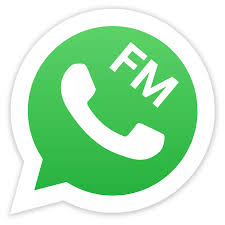
COVID-19 antigen tests performed at home can be quite suitable. A positive test can determine a COVID-19 diagnosis in a few minutes, helping you safeguard others. While a negative result of the antigen test should indeed be followed up with a more precise PCR test, fast antigen tests might be a good start, especially if you're experiencing the symptoms of the flu. Of course, a PCR test will always be more precise, but a rapid antigen test can be used in a hurry.
Consider the following factors to make the most of your antigen test.
Use a test that has been approved by the authorities
Your country’s medical authorities ensure that the available tests are acceptable for the circulating variations. Antigen tests can detect the presence of COVID-19, including the delta and omicron variants, based on the scant data we have so far. However, only use tests that have been subjected to a thorough review and have been certified for home use. Check the index of antigen tests that have acquired such authorization to guarantee you're utilizing an accurate antigen test.
Swab correctly
Swab according to the directions. Every test is unique, so follow the manufacturer's recommendations to collect an adequate sample. Getting an appropriate sample based on the test's instructions is highly dependent on the assay's sensitivity.
Never share or reuse a swab. We know that antigen tests aren't always available, but swabbing a test kit multiple times won't be useful. Instead, it can tamper with the results. The swabs are medically sterilized when they're packed for your protection and ensure there aren't any outside variables impacting the results. Furthermore, if you are positive and share a swab with another person, they are quite likely to become infected if they haven't already.
It's also crucial to utilize the swab that comes in the package. Even if the swab appears to be a regular cotton swab, it is comprised of a special fabric that has been proven to work with that test. Therefore, using another swab to take the sample will show an inaccurate result.
Photo credits: www.unsplash.com
Correct usage of a test card
Try not to move the test once opened. Antigen tests are supposed to be durable, but you should conduct yours in a quiet place to eliminate distractions. If you accidentally move the test, it will probably be fine, but the test strip may be damaged if it falls on the floor. It's better not to move the test card until you've read the results.
Only read the results at the specified time. Reading the test after a longer time than the instructions suggest will not improve sensitivity. In reality, it has the potential to skew the results. Instead, check the result once the timer has expired and do not return to it later. When tests are past due time, they are likely to show false positives and false negatives.
Properly dispose of all elements of the test. After you've read your results, the materials from the antigen test are safe to dispose of away in your regular trash. While the test elements are safe to handle, avoid getting them in your eyes or ingesting them. Make sure to read the test instructions as they contain important safety recommendations.
Next steps
Plan how you'll communicate your findings if necessary. Consider how you'll do a quick antigen test and disclose the findings if you're required to do so. Remember the legal regulations of your country or province. People with a positive antigen or PCR test are not retested for the next 3 to 6 months because they are viewed as immune to reinfection. Furthermore, because PCR tests are very sensitive, a person who has been infected with the virus can be positive on a test weeks after becoming infected, even if they are no longer infectious.
Use a PCR test to validate negative results. If you're having symptoms and a fast antigen test reveals you're positive, you should treat it as such. However, if you have symptoms and a negative test, you'll need a precise PCR test to be certain. PCR testing at home from ServiceMarket will give you peace of mind in this case.
Testing twice is recommended by several at-home quick antigen tests manufacturers. The goal of this is to catch the perfect window of viral load. For example, you may not have enough traces of virus early in an infection. However, repeating the test 48 hours later allows the virus to reproduce and create more proteins, making the test more susceptible.
It might be good to test again if you're sick after two days because more viral antigens can be present. However, even if two or more antigen tests come back negative, you should behave like you are positive until a PCR test confirms your negative status.
If you repeatedly test without a good reason, you're more likely to receive a misleading result. Even if you have a negative antigen test, you must wear a mask indoors, adopt social distancing, and increase the hygiene of your hands. Stay safe!


































